|
A lot of these titles are available in our online store.
Disclaimer: some of these title have Amazon Affiliate Links. Waggoner Cruising Guides
Exploring Series by Don Douglass & Reanne Hemingway-Douglass
Dreamspeaker Series by Ann & Laurence Yeadon-Jones
Peter Vassilopoulos Series
Other Boating Guidebooks
Reference Material
Maintenance Resources
How-To Books
Fishing
Supplemental Reading-Early Explorers
Supplemental Reading-History/Adventure
Supplemental Reading-Pioneer Days/Memoirs
0 Comments
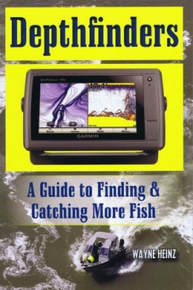 I am not a regular angler, and will admit I started leaving a window open on my chartplotter displaying the fishfinder screen as I cruise the Inside Passage. Why? I want to see what is going on below me, and yes, I occasionally jig in a school of salmon shown on the depthfinder. I thought I understood my depthfinder, but I had so much more to learn. Depthfinders: A Guide to Finding & Catching More Fish by fishing expert Wayne Heinz, taught me quite a few things about how a depthfinder works and what information it can tell you.
Many of us have spent a quite a bit of money on chartplotters equipped with a sophisticated depthfinders, so why not learn how to use this valuable tool? Who knows, when you see a big school of fish, you might decide to drop a line in the water and catch dinner! ―Mark Bunzel Mark Bunzel is the Editor and Publisher of the Waggoner Cruising Guide, an annual cruising guide covering all the great marinas and anchorages in the Pacific Northwest and British Columbia Coast, from Olympia to Ketchikan. Depthfinders are invaluable fishing tools, but how do you pick the right one? Color or black & white, single or dual frequency, power and transponders, monitor size - these are just a few of things you need to consider before you buy. Then how do you maximize its benefits to catch more fish? Depthfinders is packed with all the information you need to buy, mount, use, read, and maintain your fish finder. Troubleshooting sections on noise, batteries, cables, power, software, and more. A depthfinder will help you find more fish, Depthfinders will help you catch them! Featuring: 6" x 9" Paperback: 134 pages ISBN 9781571885210 $19.95 Find it in the Waggoner Bookstore 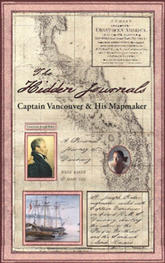 The Hidden Journals: Captain Vancouver & His Mapmaker by Wade Baker and Mary Tasi sheds new light on the voyages of Captain George Vancouver and Lieutenant Joseph Baker, the mapmaker on HMS Discovery. As a boater, it is hard not to be curious about Vancouver and his voyages to the Northwest Coast from 1790-1795. Many of the places we cruise to bear the names of members of this voyage of discovery and now the cities of Vancouver, Vancouver Island, and Mt. Baker now have new meaning and a personality behind them. This book breaks through a number of previously known facts about Vancouver's voyage and starts to fill in many gaps with many new revelations. The Hidden Journals Book ReviewIt is no coincidence that the co-author is Wade Baker, a First Nations descendent of Lt. Joseph Baker. His curiosity about his heritage started the authors on a journey of research into the real story of Vancouver's voyages. Here are a couple of points from the book to peak your interest:
The story of The Hidden Journals: Captain Vancouver & His Mapmaker is intriguing and leaves many questions still unanswered that could have legal implications. It deals very frankly with how the British Admiralty felt about the new world and its people. It sheds light on how England and the European nations truly felt about the kings and queens of Hawaii and the Chiefs of the North Coast nations. Vancouver was a very good statesman, dealing with many language and cultural challenges. His superiors at the Admiralty were not in agreement, which may support why he was shunned when he returned. If you are intrigued by the history of the Inside Passage and the voyages of George Vancouver, you will enjoy this book. This books is available through the Waggoner Guide store. ~Mark Bunzel 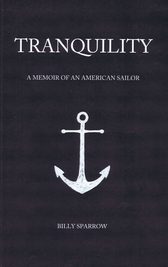 How many of us have dreamt and fantasized about buying an old wooden sailboat, fixing it up, and taking off on a real adventure? On your journey, you'd let the wind take you to new destinations, visit small towns, meet interesting characters and maybe even find love. Billy Sparrow's Tranquility: A Memoir of an American Sailor is such a story, and it is a good one. Sparrow's adventure takes place in his early twenties (don't we all wish we did too?). He is smart, good on his feet, and anytime he needs funds he earns money with his mechanical skills repairing broken down cars. Book Review: Tranquility: A Memoir of an American Sailor by Billy Sparrow Sparrow's tale is very well written. His prose and self-deprecating humor keeps you engaged, even in the roughest spots like when he is down and out, and by down and out I mean the boat is sinking and the water is rising. He and his boat, Tranquility, still make it through - just barely. Tranquilitycomes from an unknown pedigree at 29 feet long. She was built in 1938 in Canada and has a cabin, galley, and head. She sails okay and is sturdy, but by the end of the story, Billy has re-built her at least twice. Billy's goal – sail from Seattle to the Channel Islands off Santa Barbara in one summer. Along the way, he seems to have every set-back possible, but he lives, and his tale of adversary and continued love and investment in Tranquility will have every boat owner smiling. After all, we have been there and done that, haven't we? At one point, Sparrow changes his goals and decides to go with the wind. Instead of braving the Pacific Coast for a third attempt he decides to have fun and explore the San Juan Islands and places north. I enjoyed reading about familiar places and what they were like in the late '90s, like his description of the fun he had while staying in Doe Bay on Orcas Island. He never names the place, but we all know from the tale he tells that it must be Doe Bay. Throughout the book, Billy keeps the reader engaged by leaving little hints foreshadowing what is to come. Each chapter ends by slipping in a teaser which keeps the reader intrigued. Sparrow's memoir is a hard book to put down. You will laugh, or express concern for Sparrow. You will shake your head and yell Nooooo! as he heads towards his next misadventure. You will smile as he finds love using Tranquility and her cozy spaces while taking his new female friends out to discover sailing and the romance of the sea. Even the foodies will love his description of special late night dinner feasts using local ingredients expertly prepared by his backwoods friend Dalty. When you read it you will know what I mean. Needless to say, I liked the book and think it is a must-read for the boating crowd in the San Juan and Gulf Islands this summer. ~~Reviewed by Mark Bunzel Find it in on Amazon 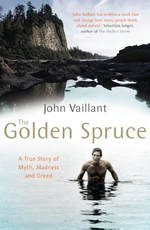 Haida Gwaii is a unique and mystical place. It is often called the “Galapagos of the Pacific” due to the many unique species of wildlife and fauna native to the islands. The island’s location, off the coast of British Columbia, experiences unique weather, which is different on both sides of the island. It is lush and green with trees including cedar, spruce, hemlock and other varieties. Thanks to an average of over 52 inches of rainfall per year in the eastern half of the islands, and a whopping 168 inches in the western half, the trees have grown big and tall. In the forest along the Yakoun River, there was a Spruce tree, golden in color, a mutation of nature. It stood out in the woods along the river, and some would say it shone, a bright star in the forest. While The Golden Spruce, A True Story of Myth, Madness and Greed by John Vaillant tells the story of a horrible act of terrorism against this special, unique and revered Golden Spruce tree on Graham Island in Haida Gwaii, Vaillant also weaves a story that includes many interesting facts about the area, the fishing and logging industries, and the people who work in them. You will also learn about the Haida, their customs and their beliefs and how one man could take away a part of their spirit. If you enjoy reading about the many places we cruise on the coast of British Columbia, you most assuredly like this book. Book Review: The Golden Spruce, A True Story of Myth, Madness and Greed by John Valliant In January of 1997 Grant Hadwin, swam across the ice cold Yakoun River at night with a chainsaw and axes in a float bag behind him. He cut the golden tree with strategic cuts where it would fall in the next wind storm two days later. He immediately claimed responsibility and called his actions justified as a demonstration against the logging industry. A warrant was set for his arrest, but the laws for cutting down a tree are not extreme. But this was a special tree, over 300 years old and unique in the world. He elected to further show his protest by kayaking in the middle of winter across Hecate Strait, from Prince Rupert to Masset, near the site of his crime in Port Clements. He never made it, or at least as far as we know. His kayak and gear were found 65 miles to the north on Mary Island in Alaska, below Ketchikan. As you will read, Grant was an expert survivalist, and his friends say he could survive anywhere. Many think he is still alive today. Author, John Vaillant, builds the tale with much information about logging and the lumber industry and mankind's demand for lumber and wood products. The scale of the numbers is staggering. You learn that Europe and other parts of the world used to be covered by forests but were cleared out for lumber and to create more space for people to live and farm. Now, the west coast of North America is providing lumber and paper products for the world. Trees are considered a renewable resource, with little consideration for the time it takes to create true old growth timber. Many of our largest trees and old growth forests are now gone, with a small number protected like items in a museum. This was Grant Hadwin's message, and parts of it resonated with me. Though the means were wrong and felling the sacred tree had an unintended impact on the Haida nation, our remaining old growth forests should be considered carefully before they too are logged. While renewable, the decades or even hundreds of years of growth a prime tree needs is too high a price to pay. For those who cruise the Inside Passage, or dream of boating through this amazing cruising ground, this book will have a special meaning. ~Review by Mark Bunzel Find it on Amazon 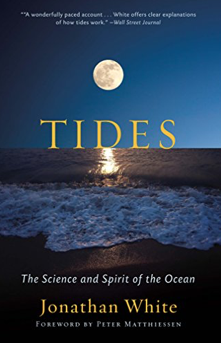 It is amazing how little we know and understand the tides and the resulting currents. To the Northwest mariner, the tides are critical to safe passage. By reading Tides: The Science and Spirit of the Ocean by Jonathan White, mariners can benefit from and appreciate a deeper understanding of the tides and what makes them work. Tides: The Science and Spirit of the Ocean by Jonathan WhiteIn Tides: The Science and Spirit of the Ocean, sailor, surfer, and author, Jonathan White captures the story of the tides and explains their historical, spiritual and technical background to understanding this global force. He tells the story through a worldwide journey to different places where the tides are critical to existence or can be downright lethal. The book describes how tides are generated and how they play such a crucial part of how the earth works. History of Understanding the TidesHundreds of years ago when the tides were not understood, the thinking was that the tides were the earth’s breathing. Newton, Halley, and Galileo each made huge advances in understanding our of tides and how they are generated by gravitational pull. The findings of the original scientist and philosophers were controversial. The Catholic church, and its popes viewed the tides as being controlled by God. Galileo was placed under house arrest by Pope Urban VIII to keep him from communicating and sharing his explanations of the planets, gravity, and the tides. What we know now, is that tides are generated by the gravitational pull from the moon and the sun primarily. They are also affected by many other factors such as friction with the rotation of the earth and even oscillations of bodies of water and their natural frequency. Imagine that we have a force in the world that has no physical connection. There is nothing touching and this force can reach across millions of miles. This force can move water and other tangible things. We take it for granted now but the early theories hundreds of years ago could not understand this force and assumed it was the work of God. Tides and Air PressureJust when you have figured out gravity and its effect on the tides, consider that the predictable and plot-able tides can be affected by the changing air pressure systems in our weather. A low-pressure system over a large area can result in less weight on the earth’s surface water. The result could be as much as a 3-foot increase in the tide height in a place like Los Angeles. Next time your tide guide is off by feet or the current strength is more than what is predicted check the barometric pressure. Pressure systems are also why extreme inclement weather timed with a full moon can lead to severe flooding such as during a hurricane. Testing Your Tidal KnowledgeThroughout the book are interesting tide factoids. Did you know:
The author, Jonathan White, lives in the Northwest and I appreciated that he included familiar examples of our tidal conditions and the resulting currents in places like Deception Pass, Seymour Narrows and the triple rapids north of Desolation Sound. I also liked that he included a section about the future and how tidal energy all over the world could generate much-needed power. In fact, tidal power could meet about 1/3 of our power requirements. We have put an enormous amount of research and effort into solar and wind power, and for the most part, tidal power is untapped other than a few test installations. (Tidal power installations are being tested in Dent Rapids and Blind Channel. There have also been proposed tests planned for Guemes Channel and Deception Pass.) While the engineering problems of harnessing the forces of tidal power are massive, they are workable. Unlike solar and wind, the tides are predictable and sometimes can offer their own means of storing power. And, tides are renewable and pollution free. In conclusion, the story of Tides: The Science and Spirit of the Oceanis a good read and includes history, travel, science and a future. Tides…makes a great summer read while sitting on the boat as it moves up and down by virtue of the tides. ~ Mark Bunzel Tides: The Science and Spirit of the Ocean By Jonathan While Hardcover, 360 pages Available at Captain’s Nautical in Seattle, bookstores, and Amazon.com. |
AuthorWrite something about yourself. No need to be fancy, just an overview. ArchivesCategories |

 RSS Feed
RSS Feed